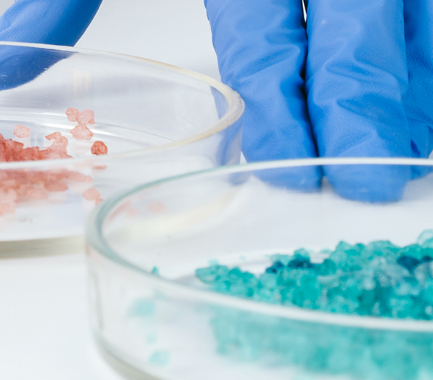Your contact
PENPET-Team - Hamburg

Jan Prager
Sales
Tel. +49 (0) 40 - 675 7 99 10
sales@penpet.de
Get in touch with us.
Monopropylene Glycol (MPG)
Monopropylene glycol (MPG) is a dihydric alkanol that is used as a starting material for polymerization and is also used as a solvent, humectant and antifreeze. In industrial processes, the compound is mainly obtained from propylene oxide, which is hydrated at high temperatures. Alternatively, monopropylene glycol can also be made from glycerol.
A large part of the monopropylene glycol produced is used by the chemical industry as a raw material for the production of unsaturated polyester resins and polyurethanes. The compound is also used as a carrier for food flavorings and medicines and as a humectant in cosmetic products such as toothpaste, skin creams and lubricating gels. Monopropylene glycol is also used to moisturize tobacco products and is the main ingredient in many of the liquids vaporized in e-cigarettes. Since it lowers the freezing point of water, it is used as a de-icing agent and as an anti-freeze additive in cooling liquids and heating media. Due to its hygroscopic properties, monopropylene glycol can also be used with water and glycerin as a fog fluid.
You can easily and reliably order the required amount of monopropylene glycol (MPG) from PENPET. We look forward to receiving your inquiry for an individual offer. Delivered as a liquid in tank containers, IBCs or drums.
CAS no. 57-55-6
EINECS no. 200-338-0
Molecular formula: C3H8O2
Synonyms: Monopropylene Glycol, 1,2-Propanediol, Propane-1,2-diol, 1,2-Dihydroxypropane, 1,2-Propylene Glycol, Propylene Glycolum, Propylene Glycol, Propylene Glycol, E1520, MPG
Areas of application: Starting material for the production of polyurethane and polyester resins, solvents, humectants, antifreeze and de-icing agents, plasticizers, fog fluid, disinfectants, detergents and cleaning agents
More Information
Monopropylene Glycol (MPG) is a dihydric alcohol based on a propyl structure that has two hydroxy groups. These are bonded to two adjacent carbon atoms, leaving one terminal carbon atom without a functional group. It is possible to have two different spatial arrangements of the bonds around the central carbon atom. These cannot be converted into one another by rotating the structure. Thus, there are two isomers of monopropylene glycol, referred to as the (R)-enantiomer and the (S)-enantiomer. Our product is the racemate of these isomers, i.e. a mixture in equal proportions.
Monopropylene glycol (MPG) exists as an oily and viscous liquid that is colorless and almost odorless. The substance is readily miscible with polar organic solvents such as ethanol, chloroform and acetone and with water. However, it is hardly soluble in non-polar solvents. When dissolved in xylene or toluene, the compound forms azeotropic mixtures with the materials. These have a common boiling point, so that the substances they contain can no longer be separated by simple distillation.
Monopropylene glycol is highly hygroscopic, which is why it is suitable for use as a humectant, among other things. Due to this property, aerosols of the compound attract fog droplets from the humidity and act as condensation nuclei.
Monopropylene glycol (MPG) is stable at low temperatures, when stored in tightly closed containers and in dissolved form. In air and at higher temperatures, however, it tends to oxidize. The substance reacts with strong oxidizing agents, acid anhydrides, acid chlorides and chloroformic acid esters, generating a lot of heat. Monopropylene glycol should also be kept away from strong bases. The compound attacks some plastics and zinc. During thermal decomposition, monopropylene glycol turns into various organic compounds, including harmful gases such as carbon dioxide and carbon monoxide.
Monopropylene glycol is flammable. The fumes from the compound are heavier than air due to their higher density and can spread unnoticed on the ground. However, only at temperatures above 100 °C do they form flammable and explosive air-vapor mixtures with the ambient air. The substance is therefore comparatively less explosive under normal storage conditions. Protect monopropylene glycol from sources of ignition such as open flames, sparks and electrical discharge.
There are no known serious health hazards posed by monopropylene glycol (MPG) itself. The compound is non-irritating to skin and only mildly irritating to eyes. Nevertheless, as a carrier for toxic compounds that are harmful to the skin, monopropylene glycol can pose a significant health risk in the work environment. Skin and eyes should be thoroughly rinsed after direct contact with the compound. Allergic reactions can occasionally occur. Taking large amounts of monopropylene glycol can lead to metabolic problems.
Monopropylene glycol is rapidly degraded in the environment and is only mildly toxic to aquatic life. However, the decomposition of the compound by microorganisms removes large amounts of oxygen from the surface water, so that the entry of monopropylene glycol into the environment can severely affect the water quality.
